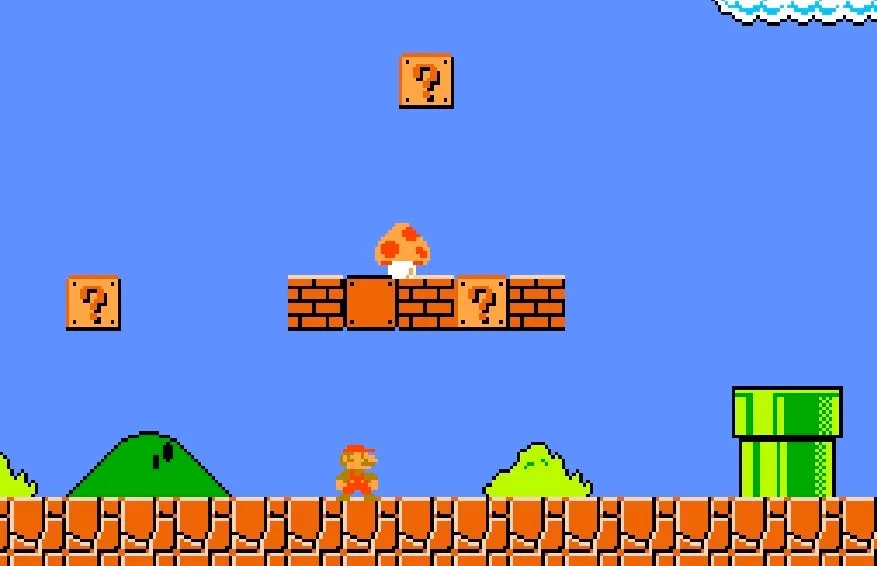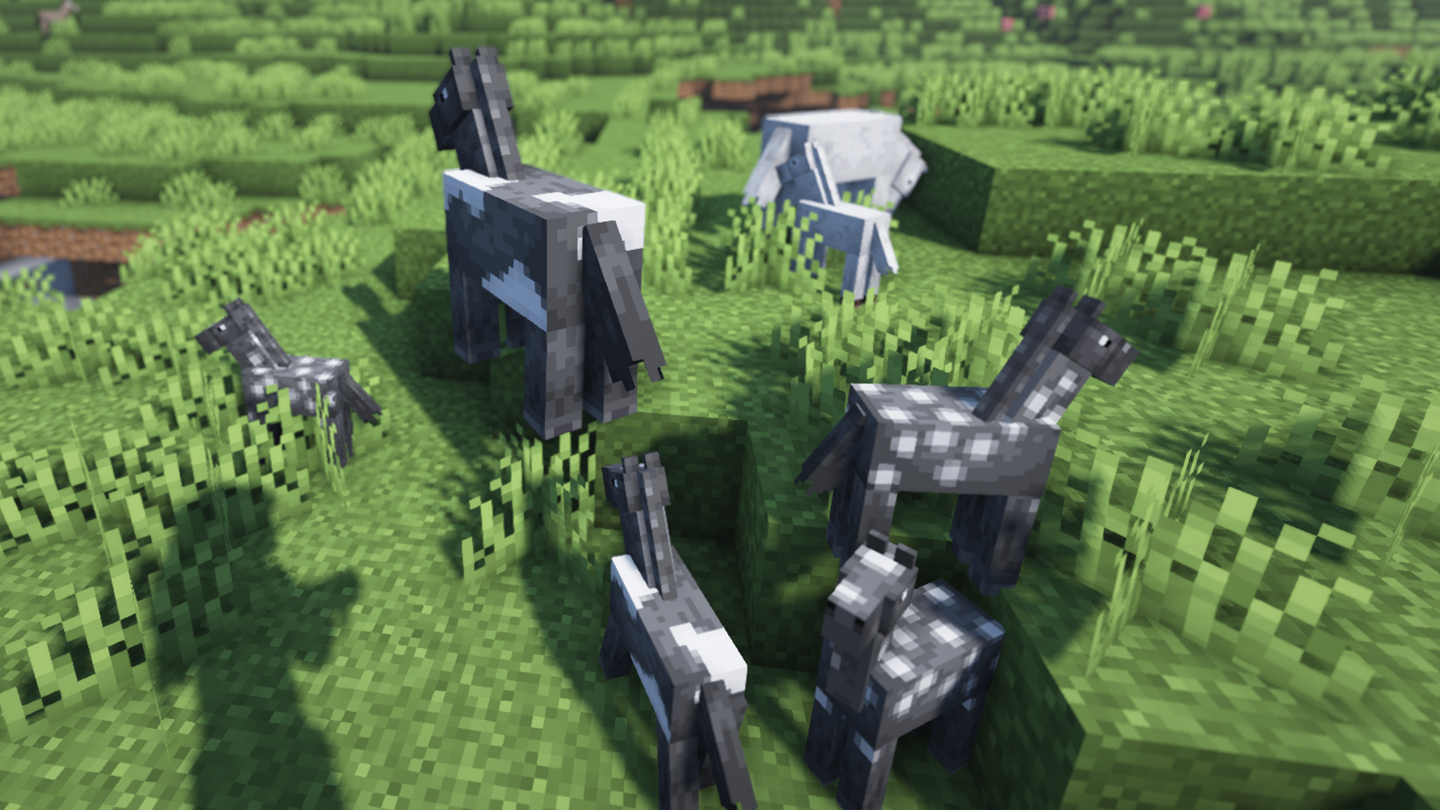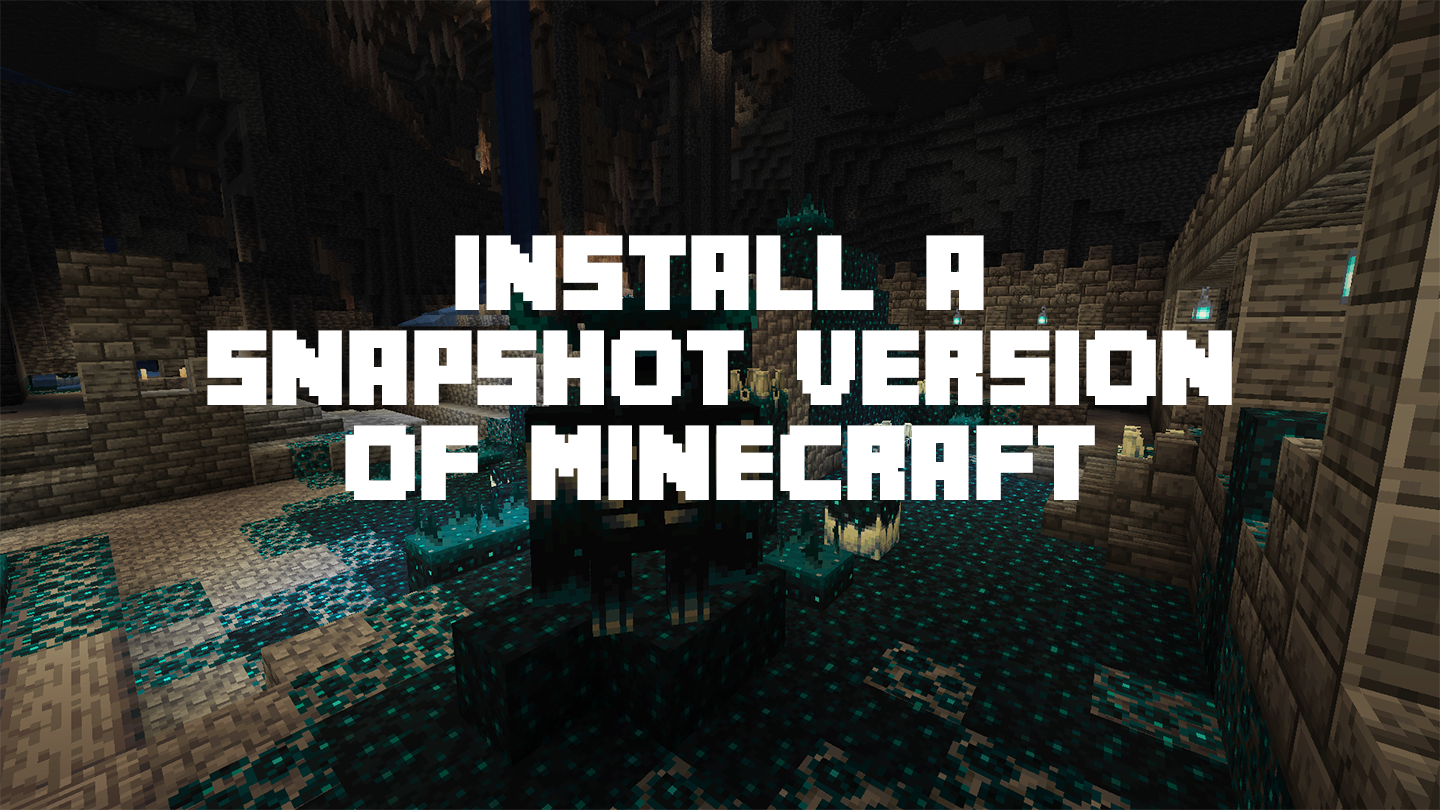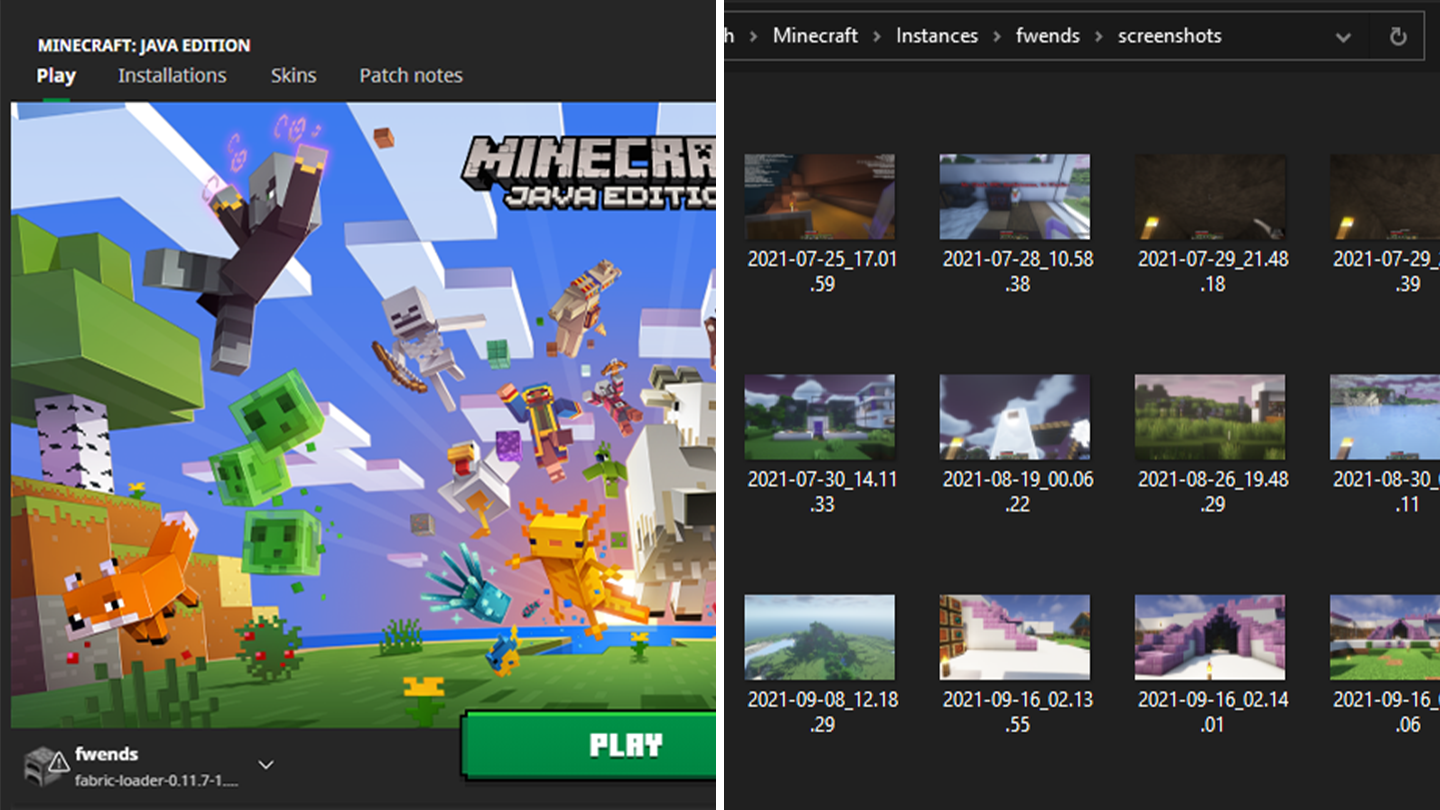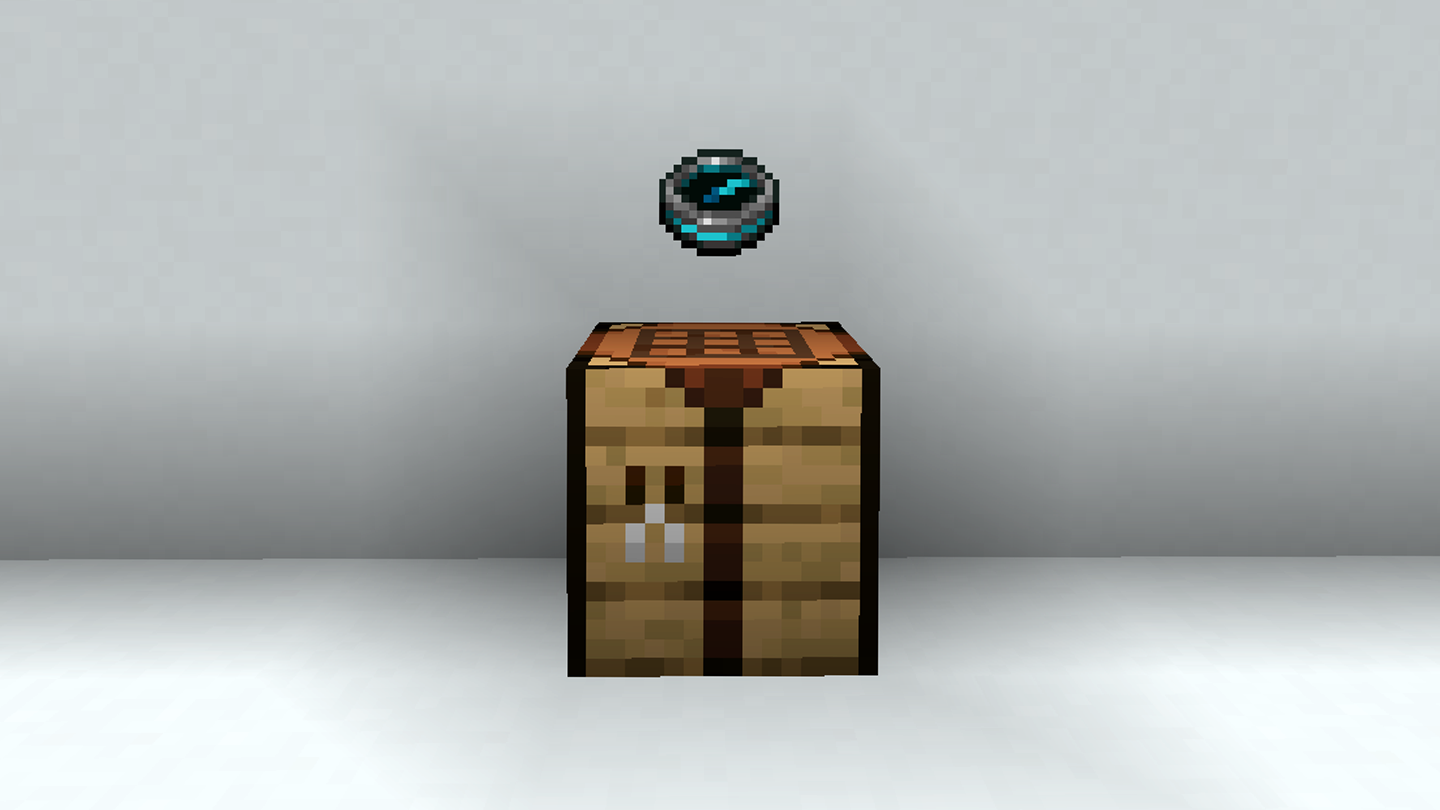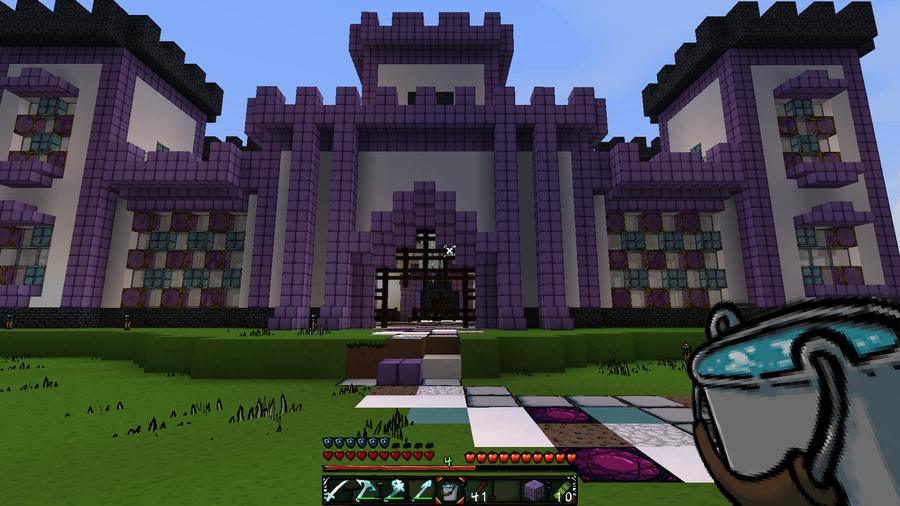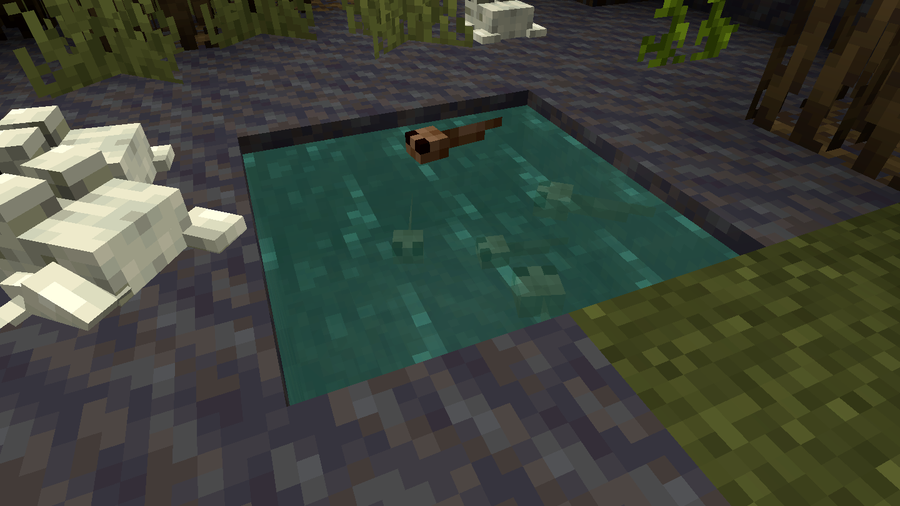The 30 Best Card Games of All Time
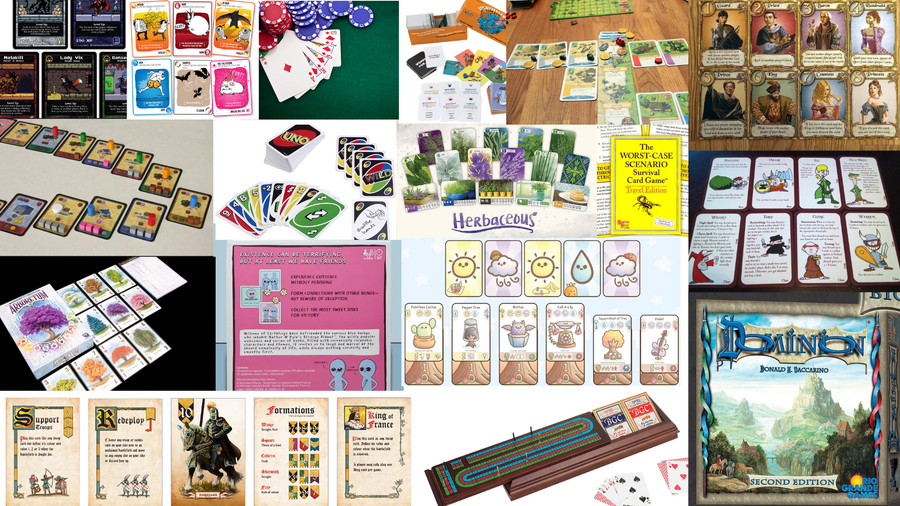
Share
Interests
I grew up playing games like Cribbage with my dad. Despite a dive into D&D in his 20s, he never really went deep with the variety of board games that would eventually become such a passion for me, but his love of the classics was strong. My Mom, too, loved card games, and I have plenty of fond memories of playing cards with both my parents.
What I love most about card games is the complexity made possible in such an elegant form, so as a gamer I mostly tend toward themed card-management games, where players take on the management of various resources on the path to victory. But every once and a while I love tapping into the classic nostalgia of my youth for a card game that never grows old.
As a geeky guy, card games have long infused my psyche through the media I’ve explored. Heck, even the crew of the starship U.S.S Enterprise played Poker! If it’s still around in Star Trek’s 24th century, it’s gotta be good, right?
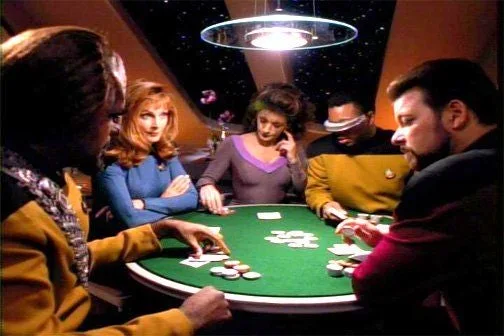
Well, I’ve assembled a list that includes a few classics like Poker, as well as some childhood favorites (Uno, anyone?). But I’ve also gone to some lengths to “build a deck” of hot options for those of you who want to go even farther with what card games have to offer. A couple of these do use boards, but even then the true game is taking place in the decks, not with the pieces on the board. I think that even old hats at the card game scene might find something new here to tickle their fancy.
30 – Sweet Existence: A Strange Planet Card Game
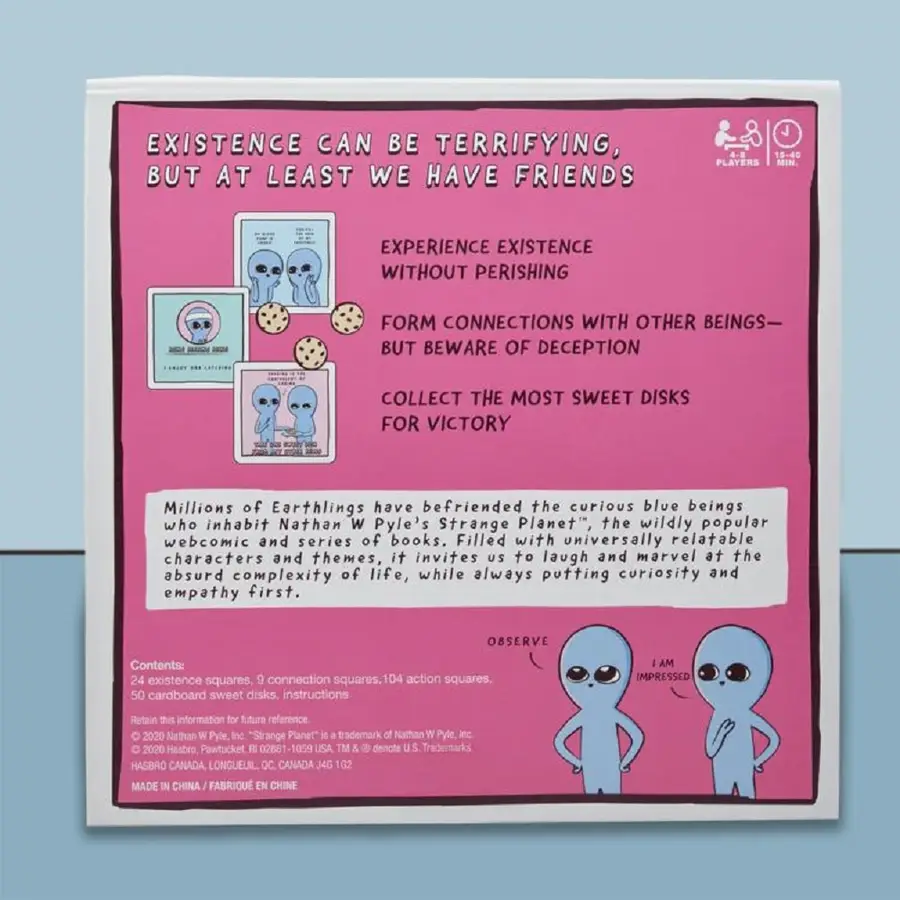
I absolutely adore the Strange Planet becoming by Nathan W. Pyle, and I own a number of the comic book collections. They’re so wonderful, strange, and always delightfully poignant, that I don’t think anyone could help but love them. The game takes the comic characters and their weird-life experiences and gamifies it in an extremely simple way, allowing players to experience the cartoon in a new way.
This one’s for fans of the comics
I can’t say I recommend this for people who are not already fans of the comic because of how simple the game is (the game isn’t scaled very well for difficulty and the outcome is heavily dependent on chance), but since the comics are all unique to the game it makes for a really fun gift for someone who loves Strange Planet and wants to own another delightful little piece of that world.
29 – The Worst-Case Scenario Survival Card Game: Travel Edition (2002)
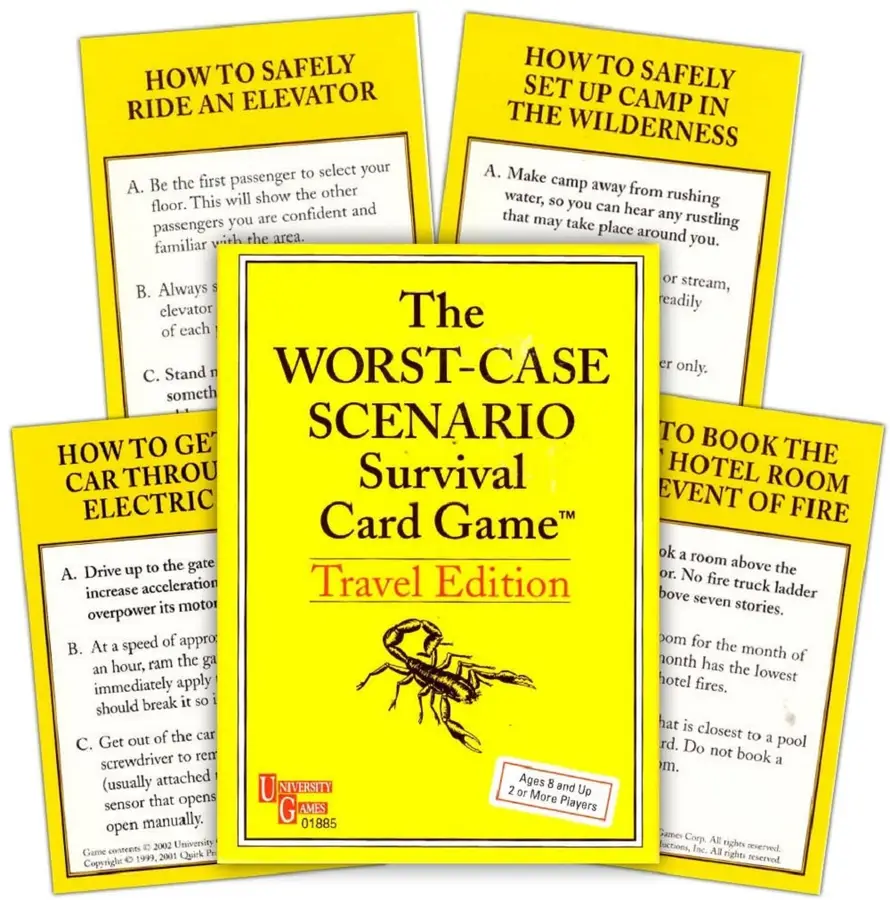
The first time that I encountered this one, I was on a trip with my sister to Joshua Tree Park in California, and we spent a couple of late nights in our cabin playing through the trivia cards and sometimes arguing about which of us knew more than the other.
What play looks like
Trivia games are always fun, but those that don’t rely upon having a digital device out are really swell in my book. The Worst-Case Scenario Survival Card Game: Travel Edition is actually intended as an expansion to the board game of the same name, but provides an extremely simple trivia game all on its own.
Hardly a “game” really, it’s a fun way to pass the time, and I could see it being especially useful for a situation like a long car ride, where playing a more traditional game could be difficult.
28 – No Thanks!
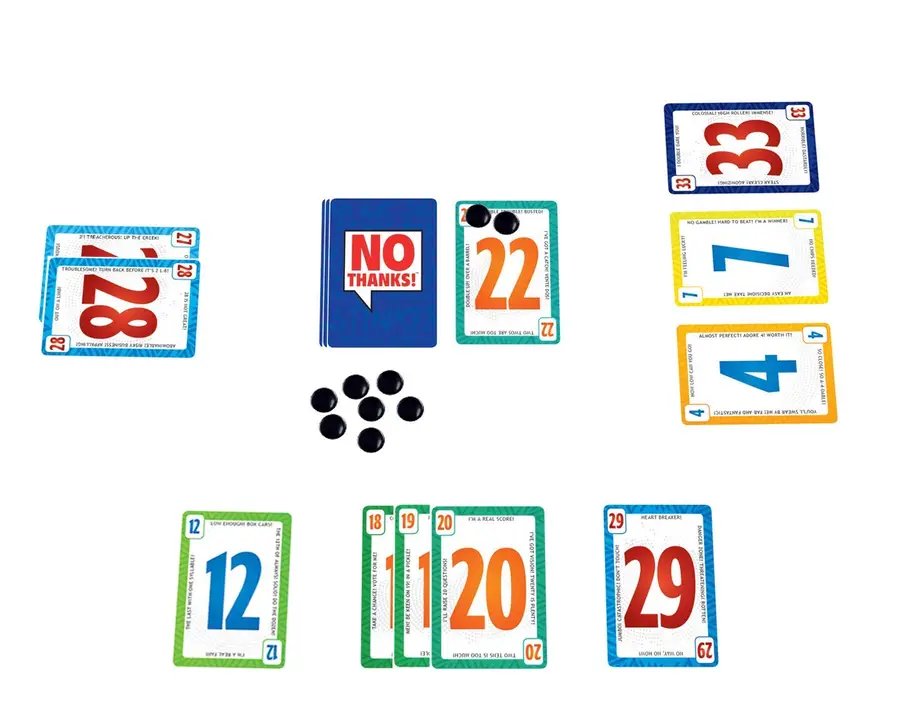
No Thanks is really simple, with just a deck of cards and a pile of chips. The cards of the deck have numbers on them ranging from 3 to 35. On a player’s turn, the top card of the deck is turned over, and if they don’t want it they put a chip on it. Then the players continue around until someone does take the card.
What play looks like
Since the goal of the game is to get the lowest score at the end of the game, the strategies involved can be quite complex, but the basic premise and rules are so delightfully simple that literally anyone can jump in and start playing right away. For a pure card game without a theme, this really is the tops in my opinion, because it manages to capture a lot of fast and fun decisions with a fair amount of decision-making and depth — all for a game that takes ten minutes to play.
27 – Arboretum
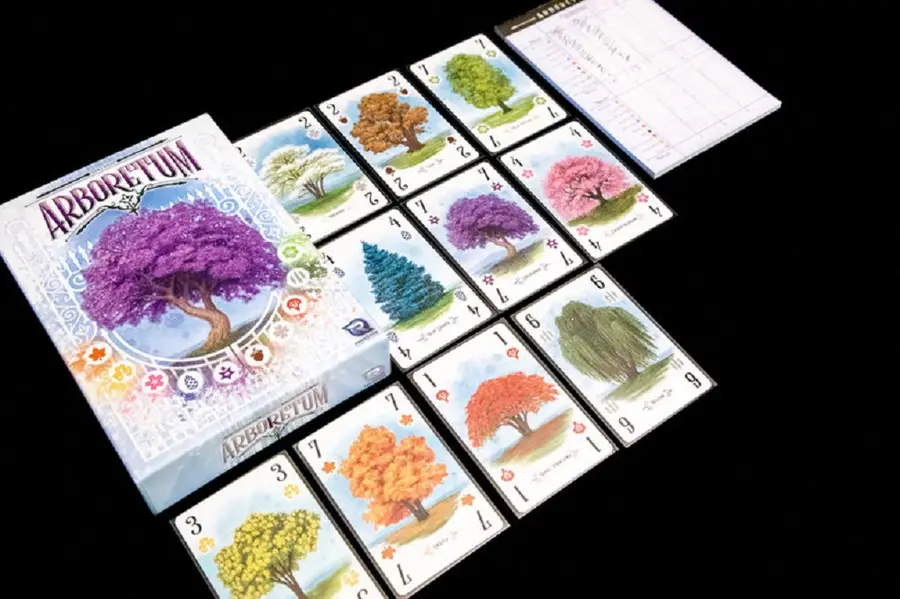
This is a game about planting trees and maintaining the best possible path through your garden for visiting sightseers. Comprised of an 80-card deck featuring ten different color suits of eight cards each. I’m a bit of an aesthetic fan, so it’s the artwork the really makes it for me, turning this into a visually gorgeous card experience, with the colors literally bursting to life as the game expands. There’s a lot of potential card strategy here, making it a good choice for anyone who loves learning a new mechanically demanding game.
What play looks like
The goal is to create paths by linking suits of cards in descending order. In many ways, this is highly reminiscent of more traditional card games, so if you’re one of those players who really love classic card games, this is a perfect option due to its familiar concepts and play style.
26 – Storyteller’s Card Game (2020)
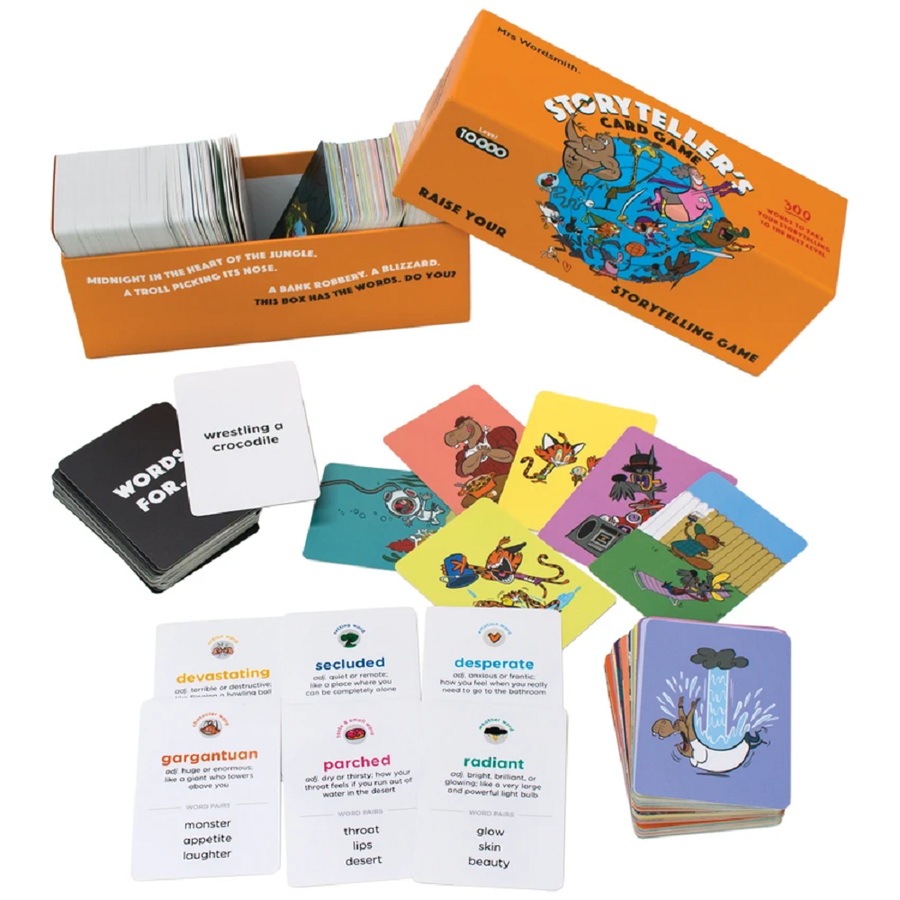
This game was developed hand-in-hand with childhood literacy experts, with the goal of making vocabulary memorization fun for kids. It accomplishes this wonderfully, providing a deck of 500 cards that are a mix of descriptive word cards and story prompt cards that, together, allow players to create simple stories (with great cartoon artwork on the reverse side of the word cards that helps to provide a visual aid for understanding the word).
What play looks like
Yes, it’s a game for kids, but what it does it does really, really well. The game is played more or less the same as Apples to Apples. After a story card is drawn by the “storyteller,” the other players all take turns submitting a card that they think has a word that best fits the story. Then the storyteller picks the card they think matches the story the best, and the player who played that card gets to keep the card (and, at five cards, wins the game!)
Because the word cards have a full description of the meaning of the word, the words that that word can pair with, and a cartoon graphic of the word in action, this game really helps provide the tools for expanding basic vocabulary quickly, with a gamified option that’s simple to learn.
Note: some of the cards are “funny” in a very modern cartoonish way and therefore lack a certain reverence that parents might wish to impart. It’s best to go through and pull out ones like “teacher’s sweaty armpits” lest the kids pick up on bad habits. For the most part, however, the game is a great way to help kids learn their vocab!
25 – Battle of Golems: The Algorithmic Card Game
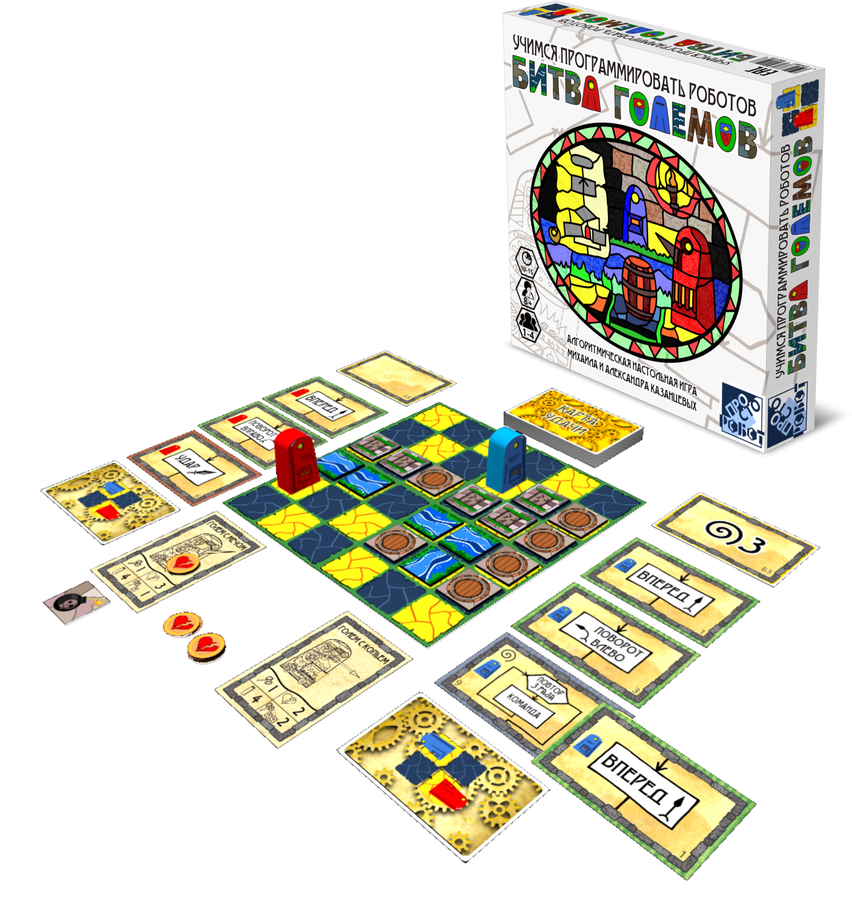
So, I don’t speak or read Russian Cyrillic, which is sadly the only version of the game I’ve been able to find, but even so, this one astounded me. Computer programming is such an important part of the world today that it really does need to become part of the basic education for kids, and finding ways to make that learning process both fun and analog can be quite difficult. I’m not a proponent of education paradigms that just drop kids in front of a screen all day, but how else are they suppose to learn something like programming?
What play looks like
Enter Battle of Golems, where the goal is to take ten rounds to program a magical golem with special commands and send it off to fight another player’s golem in the arena. It’s a cute game premise, and I’d actually say that it’s great for teaching the fundamentals of programming to people of any age, not just kids. I’m just hoping that they release an English version soon because so far I’ve just taped my own words over the Cyrillic on the cards.
24 – Battle Line

Battle Line is a radical little game designed by a gaming company that normally creates dense wargames. Their foray into the world of card games, however, has been a massive success. Players vie to control one of several “flags” on the table (which can be anything from the included red pawns to pennies).
What play looks like
Players put down one to three cards and compare them, trying to beat each other based on the number printed on the card. Cards in different combinations, cards of the same color, and cards of the highest possible total number are all potential ways to defeat the opponent. There are also a few “tactics” cards that can further add strategic depth to the play.
I love this game for its simplicity and ease of play — anyone can learn it in short order, and the combinations are easy to look up in the rules. Since the ultimate goal of the game is just to get more flags than your opponent, it all comes down to trying to play the right cards in the right order to beat your opponent — while trying to guess what cards they’re going to put down next.
23 – Bohnanza
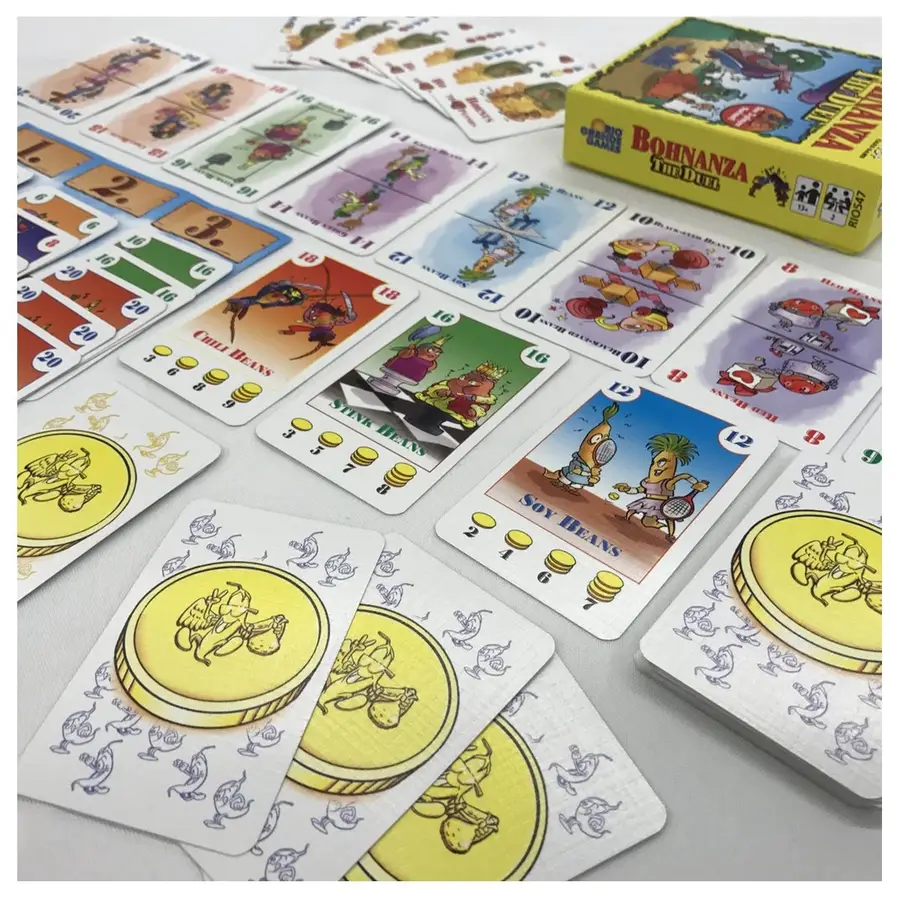
Boy, have I “bean” waiting to show you this one! Bohnanza is a real classic of the card game genre, all about planting, harvesting, and trading… beans.
What play looks like
Two to seven players work their way through a deck of bean cards and bean field cards. Growing different beans, in different groups, awards players with increasing amounts of “gold” or points with which they win the game
Setting up the game is really easy, and understanding the principles of play is easy — just plant beans by playing them from your hand, trade beans that you flip over with other players, and harvest collections of cards. The strategies of the game can be varied and the game allows for a lot of maneuvering between players, especially during the trade phase, which opens up a whole realm of replay value and tactical decision-making to what is otherwise a relatively simple system.
There are some fun expansions for this game, too, which add new mechanics that expand the strategic possibilities.
22 – Bridge
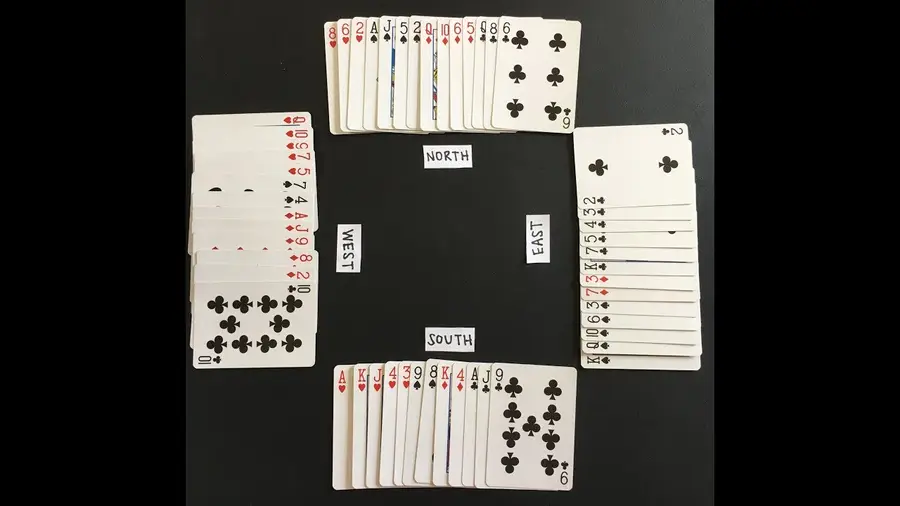
Bridge is an old classic card game, and one of the more intense competitive team-based card games around. It’s not an easy game to learn, but the learning curve to actually playing well is even steeper still.
What play looks like
Bridge is, in a sense, less about reading the cards and more about reading your partner in the game: it’s a social card game that relies on players being highly focused and aware — and woe to the player who “zones out” and misses a cue!
Players all play cards one at a time, and the player who plays the highest-ranking card will win. There are a number of key phrases that the players then use to bid, and, depending on which cards a player puts on the board, the player’s companion will be clued in on what to play next. In this way, it’s all about making sure that you’re playing cards that are helpful to your team-mate, will simultaneously outbidding the competing duo.
21 – Uno
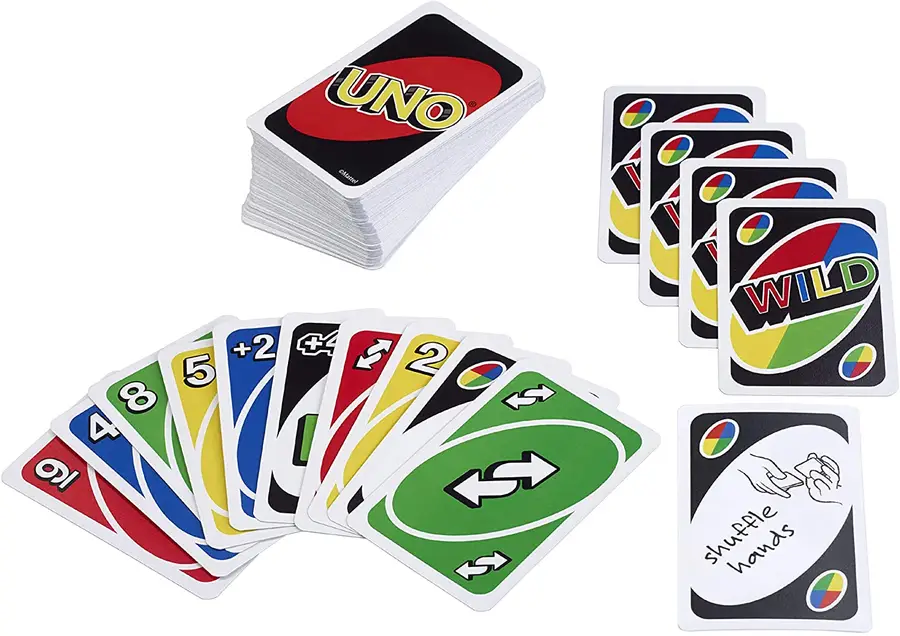
Ah, Uno. I remember all of my friends having a deck of Uno hanging around when I was a kid, and for good reason. It’s extremely simple and makes for a great party game (with up to ten players supported).
What play looks like
The whole goal of the game is to get rid of all the cards in your hand, making it sort of a fun upside-down approach to gaming (where collecting more cards is frequently the sought-after goal).
Uno takes almost no effort to learn, making it great for even really young kids (and might be a great way of helping young kids learn the basics of math and critical thinking). It plays pretty swiftly, too, so there’s enough time to grab a fresh slice of pizza in between rounds.
20 – Exploding Kittens
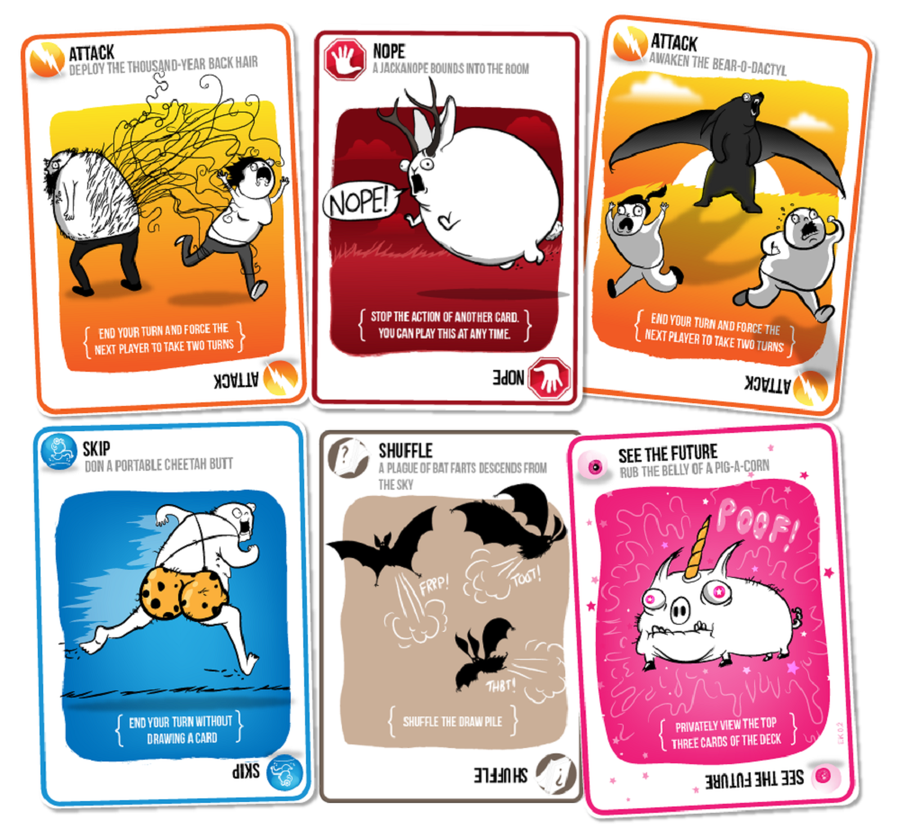
Exploding KittensHave you ever read Matthew Inman’s hilarious comic The Oatmeal? If not, you really need to. You may only be familiar with his work through his more lewd and crude work (farting cats and the like) but his long-form comics have often been some of the most memorable, moving, and emotionally stirring pieces I’ve ever encountered (to say nothing of frequently hilarious).
What play looks like
In Exploding Kittens, players are essentially just playing Russian Roulette, drawing cards until someone draws the exploding kitten card and loses the game. The complications all come in the form of using abilities on cards that you draw to rearrange the deck and avoid the exploding kitten… while passing on the likelihood of your opponents drawing it instead! Since this game takes about fifteen minutes to play at its longest, it’s a great game for those with short time (or just short attention spans).
19 – Caylus Magna Carta
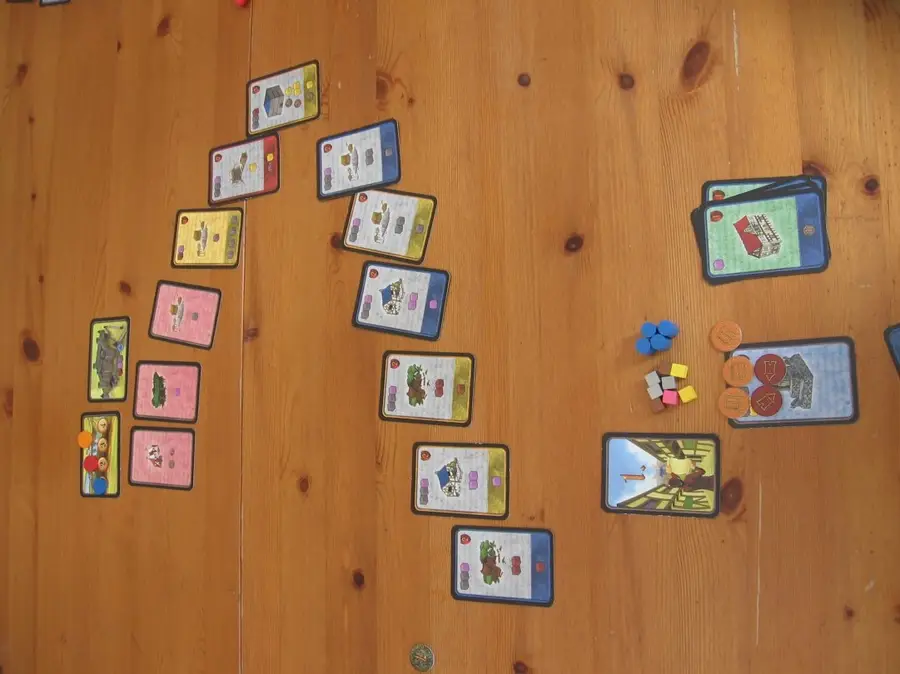
Caylus Magna Carta draws from the same themes and systems as the earlier Caylus board game but forgoes the board in favor of relying on cards and counter pieces alone. This makes the game way more portable, and the updated rules of this version make for a more streamlined and exciting play as well. For lovers of strategy and resource management, Caylus Magna Carta is really the tops, and I also cannot recommend it enough for those who like to travel with a board game handy, since its portability-to-complexity ratio trumps just about anything else I know.
What play looks like
In this game of prestige and management, players take on the role of many master architects who have been tasked with building up Caylus castle and town. There are different resources to manage, not just coin, and a huge number of buildings and systems in place to add depth and complexity. Over the course of the game, the players literally build up the town around the castle, moving back and forth taking turns to complete more objectives than others.
18 – Imperial Settlers
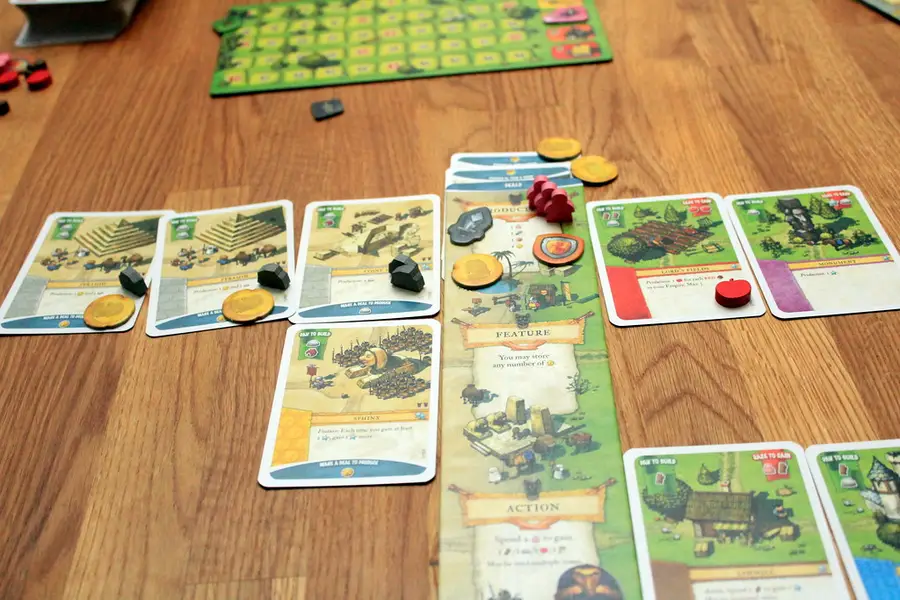
I’m one of those nerds who gets totally addicted to civilization-building games and seeing that style of game, which is so often found in the PC-gaming world, placed onto the tabletop is always a treat.
What play looks like
In Imperial Settlers, players take on the role of a faction that will vie against other factions for dominance of a wild frontier! The game does technically have a board component, but the whole mechanical aspect of the game is handled by the cards, with the aid of different counters. There’s a lot of great resource management in the game, providing a lot of replay value through complexity.
Each player has their own deck and a common deck, and the main focus of the game are those cards that comprise the faction deck. The different civilizations all have their own special cards and abilities, creating widely different play styles. The game plays with up to four players, and it actually works really well with its solo version, which isn’t always the case with board games.
17 – Cinelinx: A Card Game For People Who Love Movies (2014)
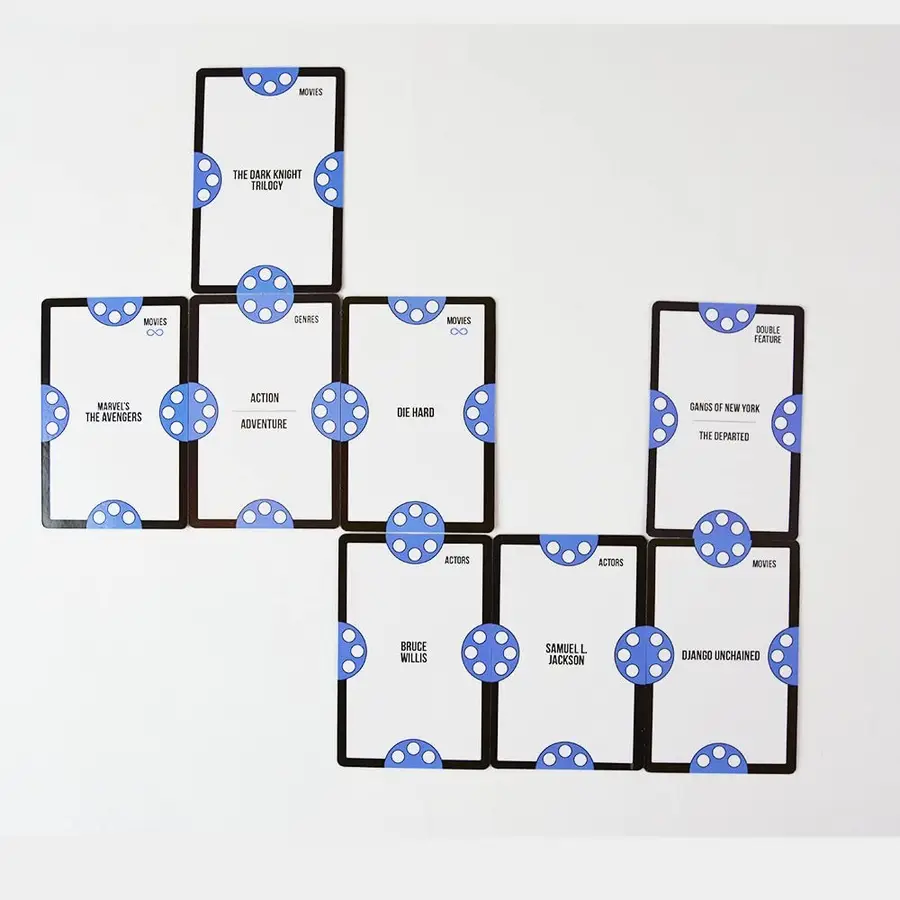
Trivia games are always so-so for me, and I’ve never been a fan of shows like Jeopardy, but I am a huge film nerd. What caught my eye with Cinelinx, though, wasn’t that it was just yet another film trivia game, but that it actually had a really cool game mechanic component that elevated it way above its peers.
What play looks like
In Cinelinx, players are actually linking cards together on the table, connecting them based on a number of factors (such as if two actors appeared in the same film, or if two films were made in the same year). It means that even players with less film knowledge can have fun and that those with a hoard of random cinema trivia in their brains can really get it out (finally, so it stops haunting their dreams!).
I don’t often see trivia games that have such a cool component to them, so this one landed a surefire spot in my collection, to be pulled out whenever I have friends over for a movie marathon party.
16 – Love Letter
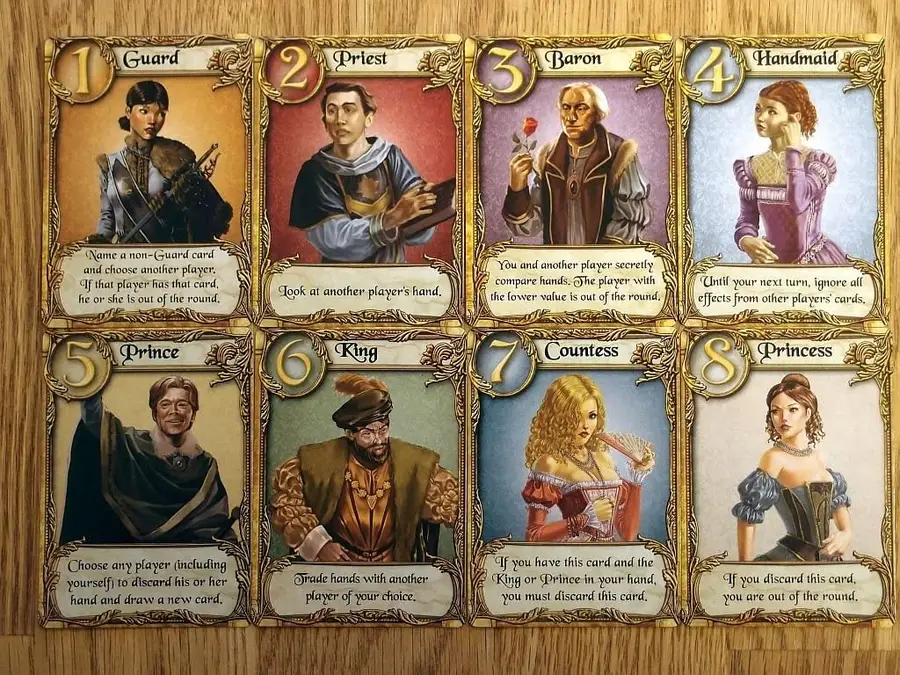
Attempting to woo the Princess and win her hand in marriage is not an easy task, especially when she’s locked herself in the palace and is only accepting correspondence through her servants. Only the best love letters will stand a chance of showing her that you have what it takes to be her husband and sit by her side. The catch? You’re by no means the only person sending letters to the princess.
I was extremely surprised to learn that this little game is a grand total of eighteen cards. For a game that has as few cards as this, the game is incredibly fun and is easily something you’ll want to play again as soon as you finish your first game.
What play looks like
Each player starts with just one card. When they play a card, they activate the ability on that card, and players go through a round playing cards one at a time like this. Each time a player wins a round, they get marked by a little cube, and the players with the most cubes at the end wins (representing the number of love letters that made it to the princess).
It’s a really cool concept, and just one in a line of similar games by the same company, all of which come together to form a thematic experience of love and intrigue!
15 – Poker
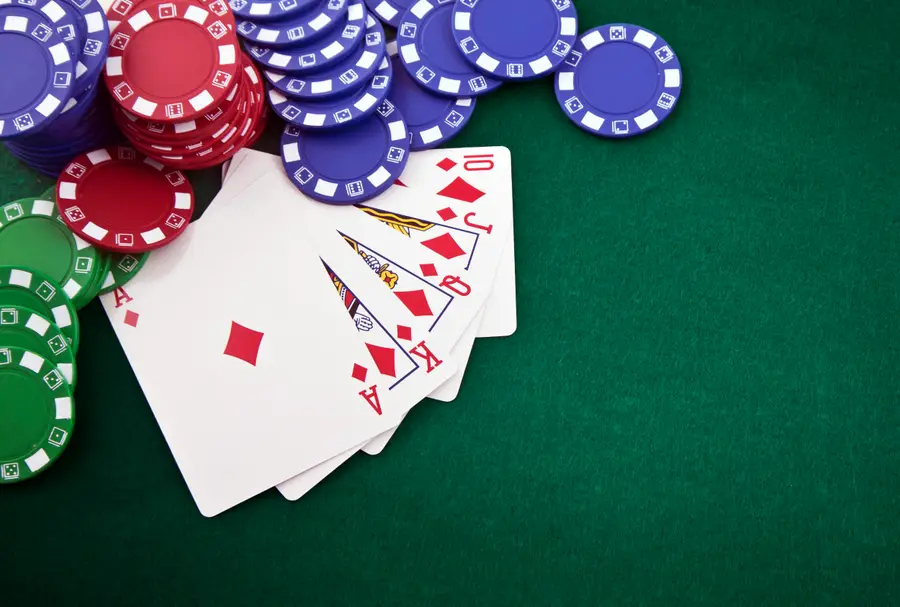
I’ll admit that I’ve never been a big player of Poker, but I did like watching the crew of Star Trek: The Next Generation play it from time to time on the show, so it did manage to get at least a little way into my subconscious. Anyway, it’s one of those classic card games that offer a ton of variations and can end up getting pretty intense (even if all you’re playing for are chips or hose chores).
What play looks like
Basic Poker comes in a couple of flavors, Stud and Draw.
In Stud, players are dealt five cards, and then assess the strength of their hand and wager chips based on that strength. The player who bids the most chips wins (with players matching each other’s bets). Finally, the two remaining players will compare hands and the best hand wins the pot.
In Draw Poker, the players are dealt five cards. A betting round follows, after which players who remain may attempt to improve their hands by trading up to three cards between their hand and the deck (players with an Ace may trade in all four of their other cards).
The betting rounds are:
- Raise (where a player may increase the wager),
- Fold (where the player(s) who don’t think they have a chance of winning may lay down their cards and avoid losing more chips.
- Call (where, after the stakes have been raised, a player decides to match the amount wagered by the player who just raised)
- Check (where, if nobody has increased the wager, a player may pass on his option to bet, effectively skipping their turn)
Because these basic rules are so simple, it makes a great pick-up game with nothing but a deck of normal playing cards.
14 – Boss Monster
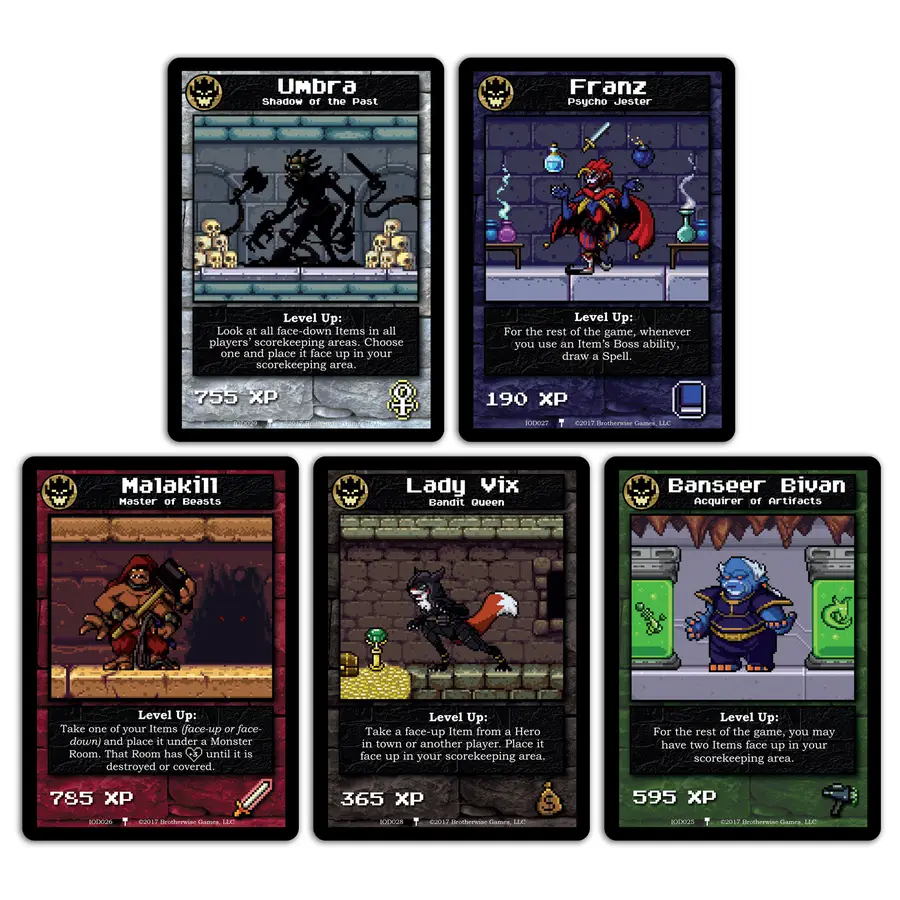
What happens when you cross classic 8-bit video games with card-game nerds? Boss Monster, that’s what! Boss Monster takes the 8-bit aesthetic and runs with it, with the object being to create the best side-scrolling dungeon of them all.
What play looks like
Players try to create the best dungeon, lure in adventurers, and then destroy them, using hoards of monsters (including the boss). This game is so much fun that I once played it halfway through the night with friends before even realizing that the sun had set.
Boss Monster is all about trying to lure in adventurers faster than your opponent boss monsters (players), while also trying to defeat those adventurers before they can get far enough through your dungeon to attack your boss monster. Each turn, players build a room to their dungeon, trying to balance attractiveness with deadliness to find just the right mix to lure adventurers without being overrun by those mighty heroes to whom all dungeons are but playthings!
13 – San Juan
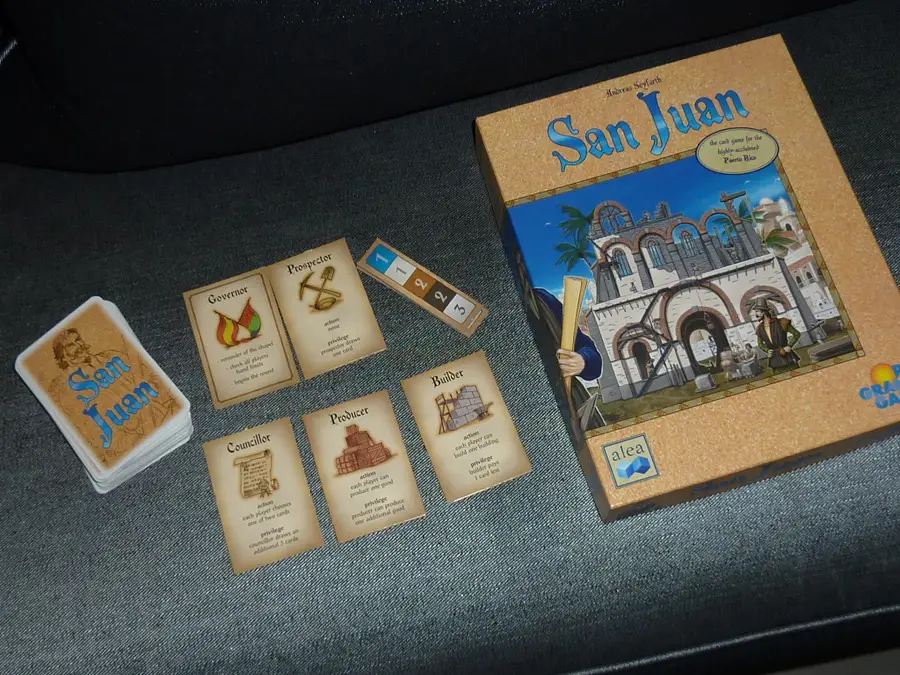
San Juan is all about role-selection and tableaux building, where players take on a role that allows them to construct different types of buildings (which all have different effects, including directly affecting the gameplay itself).
What play looks like
In San Juan, roles are shifted between rounds, and each role is vital for different reasons, allowing players to handle different aspects of their construction empire. Set up for the game is extremely simple, and the game plays really swiftly and easily — though there are also some great expansions that build on the basic mechanics to add additional complexity and variability to the system.
I really like how easy this one is to learn, while still managing to feel like a really complex city-building experience. Finding a mechanic set that allows for this sense of depth and this ease of play isn’t easy, and San Juan does it really, really well.
12 – Plantopia: The Card Game (2020)
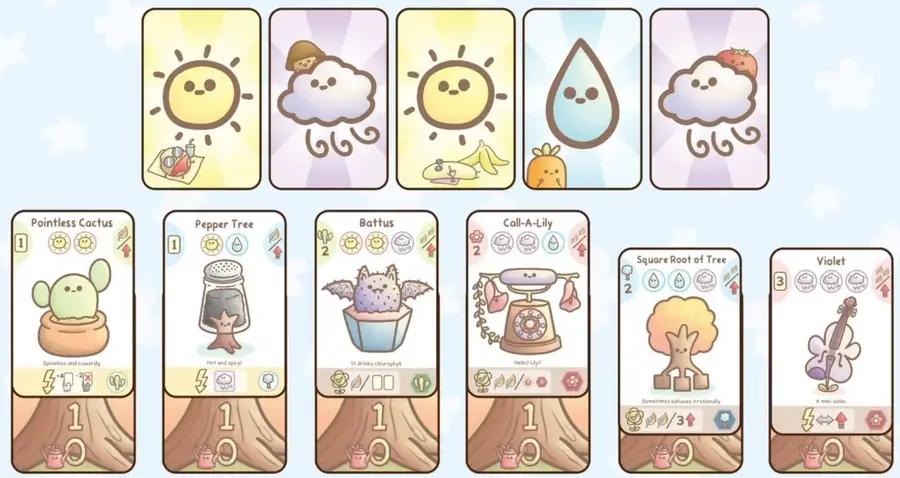
This strange and adorable game was kickstarted with almost 180,000 dollars so clearly, it hooked people from the very beginning. It calls itself a “gardening game” but what it most reminds me of is Pokemon (without the combat aspect).
What play looks like
Players are rival gardeners who must synergize their plant combinations, as well as utilize weather cards and rival gardens to get their plants to grow (and evolve — hence the Pokemon similarity). It also has a quirky Japanese-cartoon aesthetic which I love.
The game is based on the webcomic Life of a Potato which is very zany and fun. I like several elements about the game, from the cute artwork to the mild competitive aspect, to the cool interconnect ways that players can make their gardens succeed.
11 – Sentinels of the Multiverse
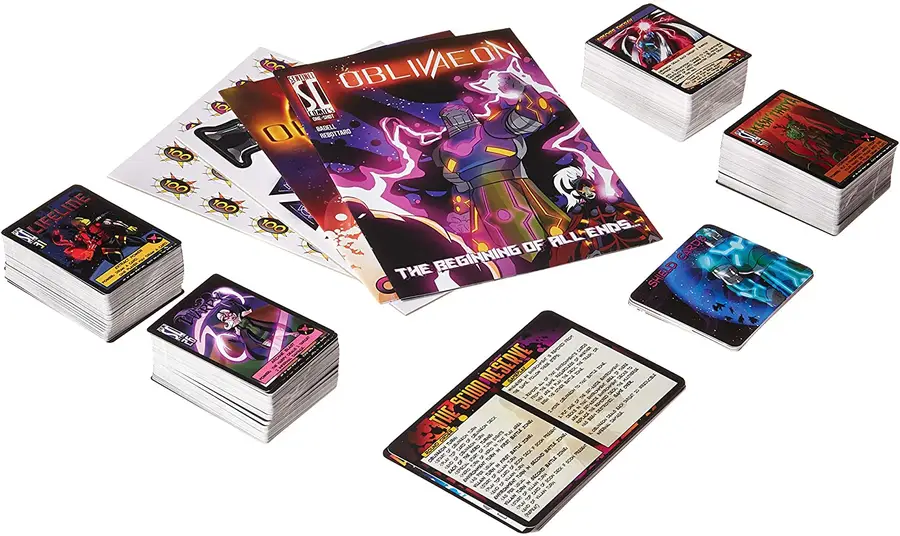
Cooperative games are literally my favorite (you can read my list of the best co-op board games here), and it’s really exciting to see a co-op card game out that manages to pack in so many options in such a straightforward way. The thing I love about this even more than its co-op component is the delightful artwork that it features, which captures a stylized comic book experience and feels really well-linked by theme. I’d happily read a comic book series featuring these characters.
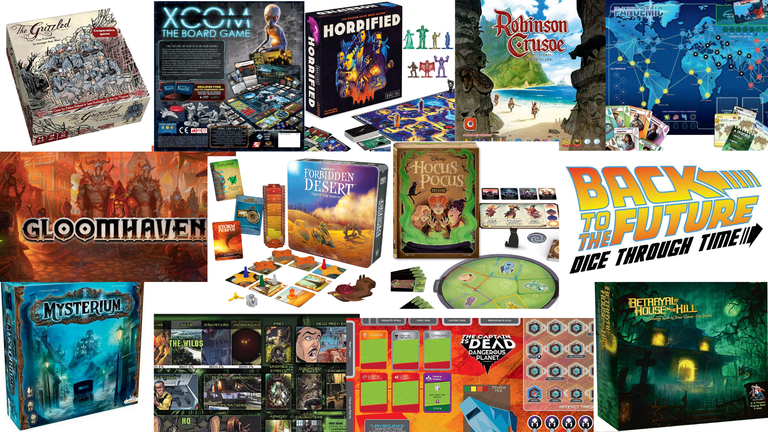
The 30 Best Cooperative Board Games Ever Made
Co-op board games for every play-style preference and age!
What play looks like
Players take on the role of different heroes fighting against villains within different environments. The villains and environments are connected in interesting ways, too, and can come up in different combinations, meaning that fighting a villain in one location can be harder or easier than fighting them elsewhere. This mechanic adds a ton of tactical and replay depth.
The whole aesthetic of the game is really lovely, actually, with high-quality components that show a lot of care on the part of the designers. Since it’s easy to learn and play, too, this game is massively accessible, meaning that it can be played by game novices and kids without any hassle. The only catch is that it plays best with four players, even though it does work for as few as one or as many as five, so this really is a game to play if you’re having a couple of friends over for dinner.
10 – 7 Wonders
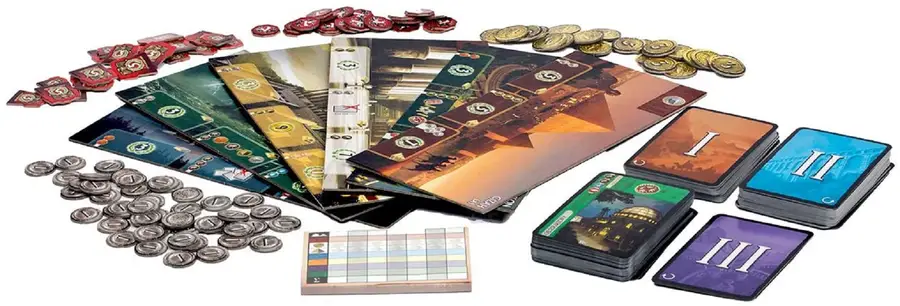
7 Wonders is an awesome civilization-building game utilizing cards. Players work through different ages of their civilization, represented by three different piles of cards, and players take turns playing through each of the three decks until their unique civilization is complete. It’s a remarkably simple game that manages to create a hugely fun experience with very few components.
What play looks like
One of the coolest aspects of the game is how it can scale for the number of players in the game (from 3-7) by removing specific cards from the deck. This makes it a fun party game with a lot of variation, as well as a great intimate family game with a great historical aesthetic.
Players try to build the best city and defend it, between ages, through military conflicts, so for a very small footprint this game offers a lot of value. It does have a bit of a learning curve, but once the rules have been internalized play is swift and fun.
9 – Spades
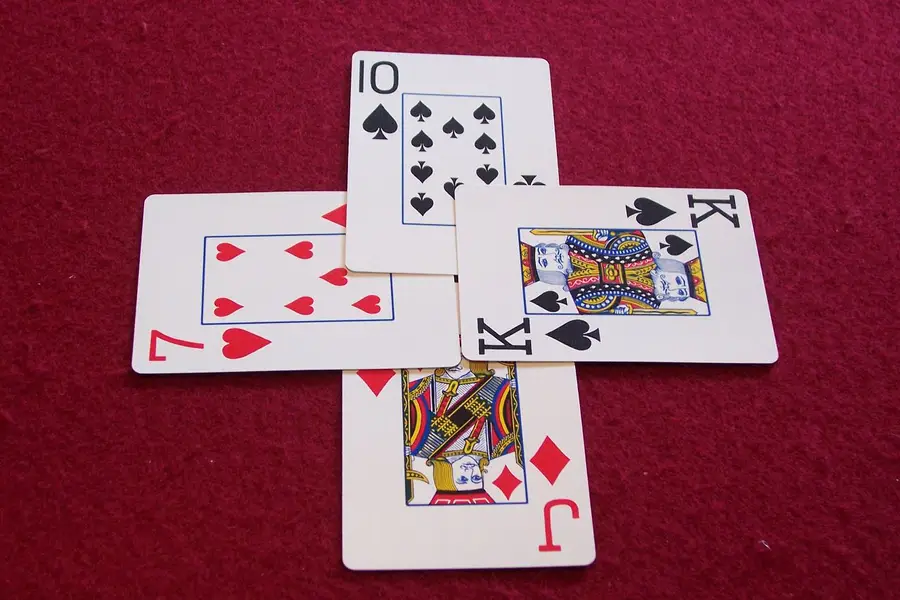
One of the easiest card games there is, Spades, is also extremely popular, played by people around the world, and beloved by parents who want to start teaching their kids a simple card game. Developed in the 1930s as a fast-paced alternative to popular games like Bridge, Spades is extremely simple to learn and easy to play and is playable by groups of two to five (but played best with four).
What play looks like
The goal of the game is to get more tricks, or hands, than other players which is pretty standard for basic card games, but, in Spades, as befits the name, spades always trump the cards of any other suit.
In its standard 4-player incarnation, Spades is a team-based game, with players across from each other working together just like in Bridge. Since it’s so much easier to learn and play than with Bridge, however, the game tends to be more popular with players looking for a casual gaming session.
8 – Haiku Warrior
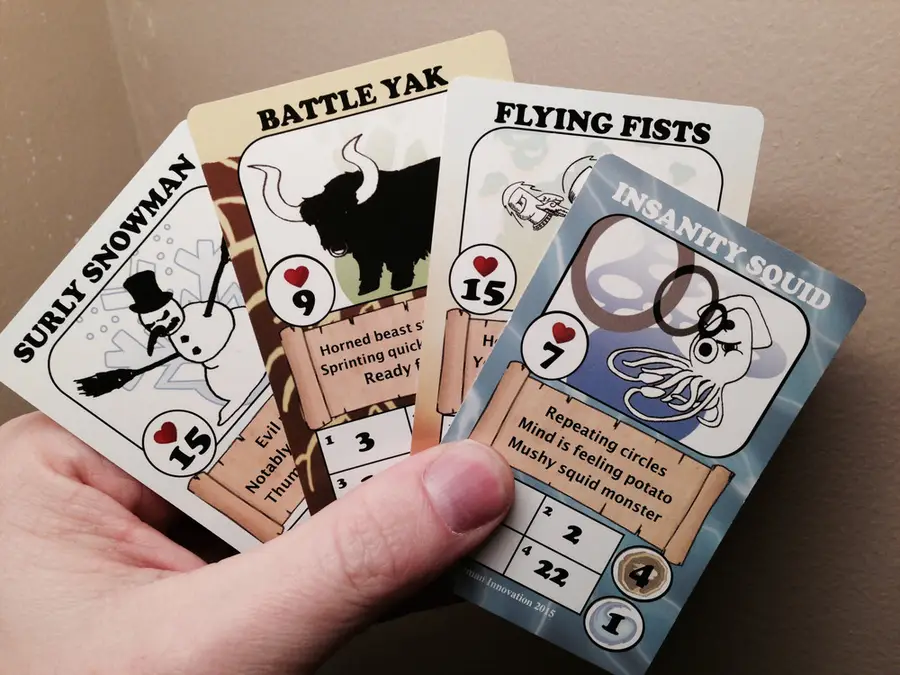
An entire roleplaying game told through haiku! This one is a blast for me (after all, I’m a huge fan of this poetic form, I even wrote my own collection of haiku a while back), so I naturally needed to grab a copy. Plus, I love some good RPG fun.
What play looks like
Haiku Warrior is delightfully silly, pitting players against the Order of the One Extra Syllable who are sowing discord throughout the land. Players select a hero and then spend coin earned during the game to add gear before venturing off on various quests (determined by quest cards).
Characters don’t interact directly in the game but instead fight various haiku monsters on their way through the quest decks, meaning that the game can technically even be played solo. The “winner” is the player who defeated the most Haiku monsters and collected the most souls during play. Simple, silly, and totally a blast.
7 – Magic: The Gathering
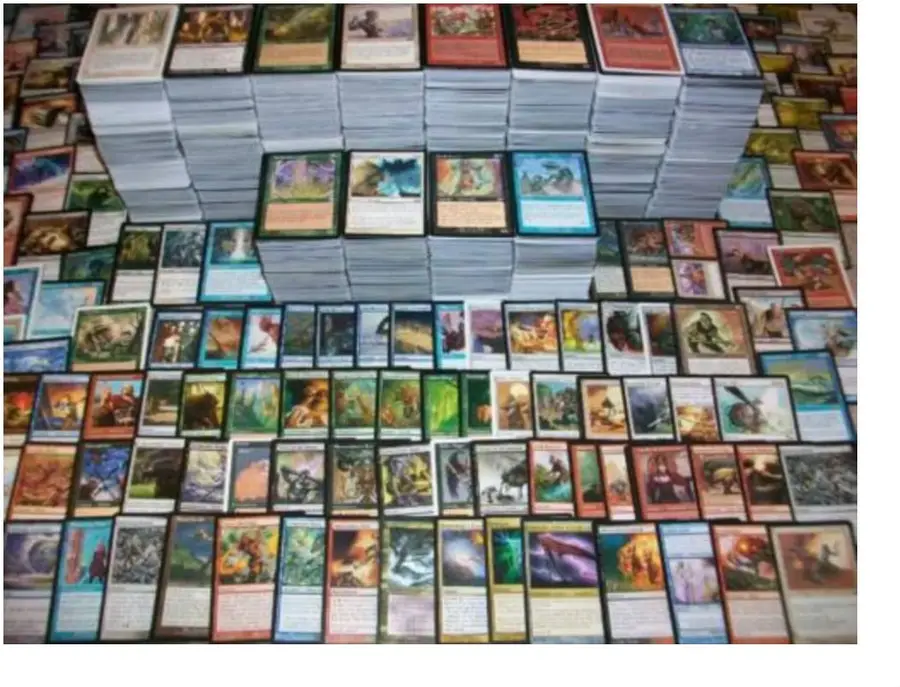
Magic: The Gathering has been called one of the most potentially complex games in existence and manages to be a great social experience at the same time, all while being incredibly simple to learn. Since there are well over 20,000 cards in existence, there are massive possibilities for new decks, and since the game is based around trading cards with other players, the aspect of trading can, itself, become an addicting aspect to the game.
What play looks like
The basics of the game are very simple: players have Land cards that generate “mana”. Mana is used to play other cards, with all cards having different numbers and combinations of mana costs. Creature cards are the most common variety of cards after lands and are put into play in front of the player to provide various offensive and defensive aspects.
Players win the game by dealing damage to the other player, which is accomplished by finding ways through or around the creatures their opponent has in play. Since there is a huge range of possible tactical choices, from the basic ones inherent in the primary mechanics of the game to those created by the effects printed on certain cards, there’s a massive potential in Magic for replay, even when using just the same deck over and over again.
6 – Munchkin
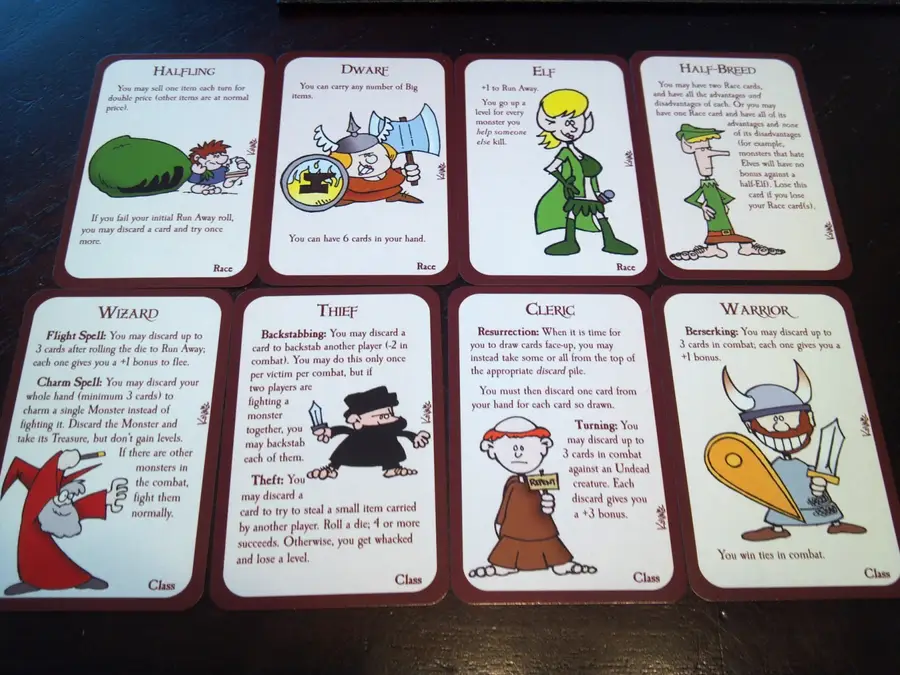
The ultimate game of silly backstabbery, where the goal is to trick your friends and triumph over their ruination! Thanks to the sheer hilariousness of the game this competitive aspect is rendered fun, and especially so for groups of at least four players (when all of the rules and back-stabbing can be taken advantage of fully).
What play looks like
The game is a satirical RPG based on cliches of the RPG genre and geekdom in general. Players start as a “generic” character and gain cards to upgrade their gear, race, and class during play. Monster cards are drawn from one deck and can be fought to increase a character’s level and gain new gear — and there are a whole host of ways to use items and abilities to stab your friends in the back and rush on to take the lead.
Some of my most memorable moments with this game involve having to team up one minute to take down an extremely powerful monster, and having to defend myself wildly from a clever onslaught by my erstwhile partner the next!
5 – Herbaceous
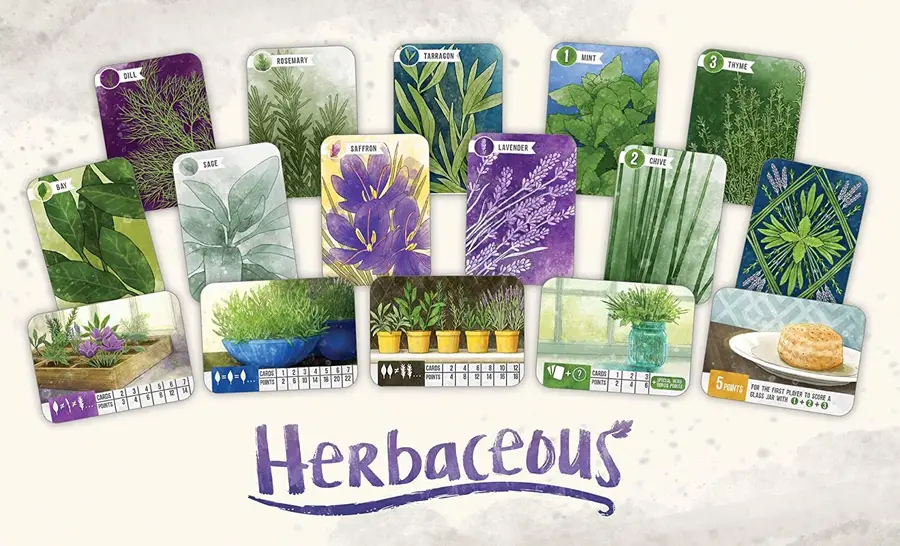
Herbaceous fast became one of my favorite light card games, in part because of how simple it is, as well as because of the gorgeous artwork on the cards in the deck. The premise is wonderfully simple, too, with each of the players taking on the role of a competing gardener trying to create the best herb garden of them all. It has some hilarious components, too, like nicking stuff from the community garden to plant at home.
What play looks like
The mechanics are simple, with the goal being to collect a number of the same herb cards, with points being awarded at the end of the game depending on what combinations of cards have been collected. It’s a great game for kids, too, because it only takes about fifteen minutes to play, and teaches some fun math fundamentals as part of the tactical process.
There are some cool expansions for the base game, too, which add additional cards and complexity, making it a great option for a game with replay value.
4 – Race for the Galaxy
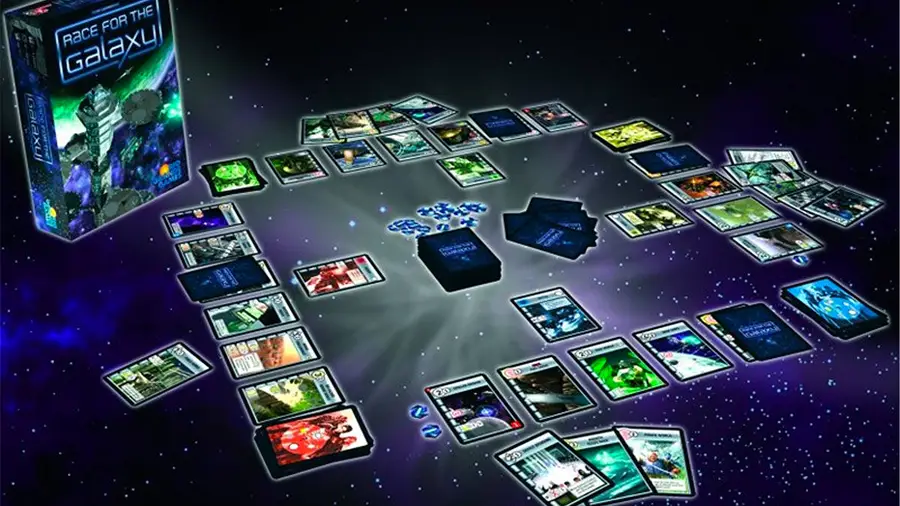
Race for the Galaxy is a really wonderful game in the same mechanics arena as San Juan — you’re trying to build a grand space empire, represented by building tableaux on the table out of cards from the deck.
What play looks like
One of the coolest aspects of this game is that it does away with some of the external counters found in games of this type and pulls in the whole complexity of the economics aspect through the cards themselves — that’s right, the money used in the game is actually just the cards themselves. This means that managing the cards in your hand becomes extremely important, adding a massive layer of complexity to the possibilities of play, but all without adding complexity to the actual pieces in play.
Notoriously difficult to learn and with a somewhat opaque instruction guide, the game is actually pretty simple to learn — I’d just recommend searching out one of the many overview videos available on the net rather than trying to make a go of it on the rulebook alone.
3 – Mythotopia
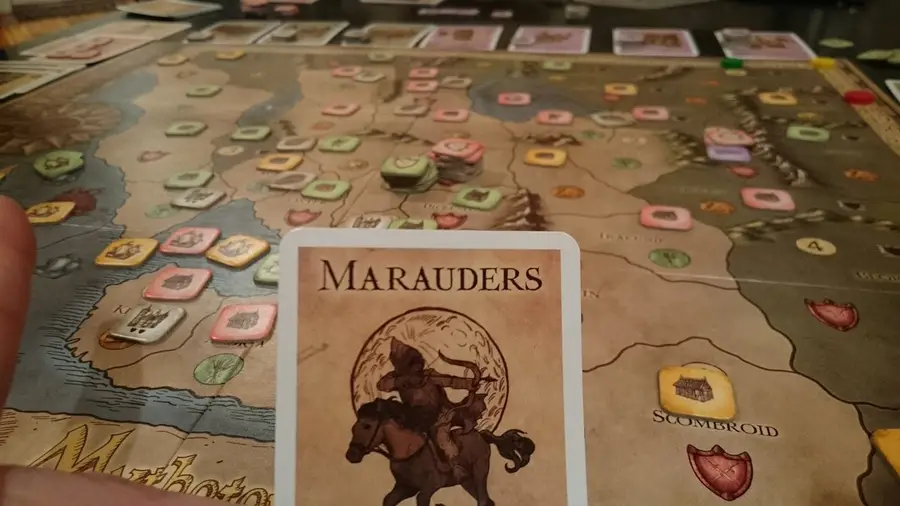
Deck-building games are seriously awesome, and Mythotopia takes that mechanic and applies it to a seriously delightful medieval fantasy aesthetic that I found totally delightful. The basic premise of the game is to build up a unique deck of cards during play, finding your optimal strategy as you go.
Now, Mythotopia is a board-game based card game, so it’s a bit less portable than others on this list, but it is functionally a card game first and a board game second: the strategy is all about building the right deck to combat your opponents and gain as my victory points as possible. There’s also a resource management component, which is something I love seeing in a game.
What play looks like
Each player takes on the role of a competing medieval fantasy nation, with everything from massive army battles, to infrastructure construction, to heavy-handed tactical considerations. Sometimes, the best way forward in this game is actually to retreat, too, which adds a lot of strategic complexity on its own. Despite all that complexity, the game is pretty streamlined and easy to play, and players are unlikely to find their hands getting bogged down with unnecessary cards.
2 – Board Game: Cribbage
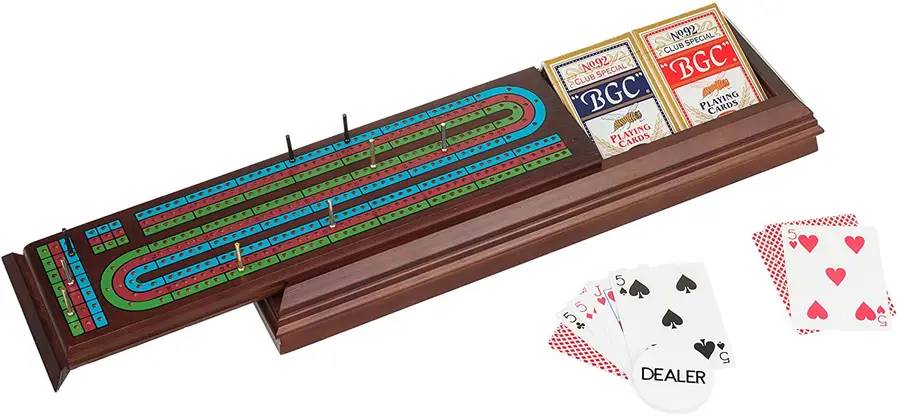
Ah… Cribbage, one of the old classics. My dad loved this game, so I’ve been playing it for a really long time. Though I’m most familiar with the two-player variety, it can be played with up to four players, providing a range of options for groups of friends.
What play looks like
Players look through their hands and decide what to keep and what to put into the crib, then draw more cards. The point of the game is to win points based on different card combinations, and these points are then translated into slots moved around the cribbage board by the player’s little colored peg.
In a sense, the game is really two games played at the same time, with the pegging round concentrating on moving the pegs forward based on different point combinations. Then the counting round enters, with players using both the cards in their hand and (for the dealer of the round) the crib, to try and get points to move their peg further around the board.
With four players, the play becomes team-based, with the players sitting across from one another working together.
1 – Dominion
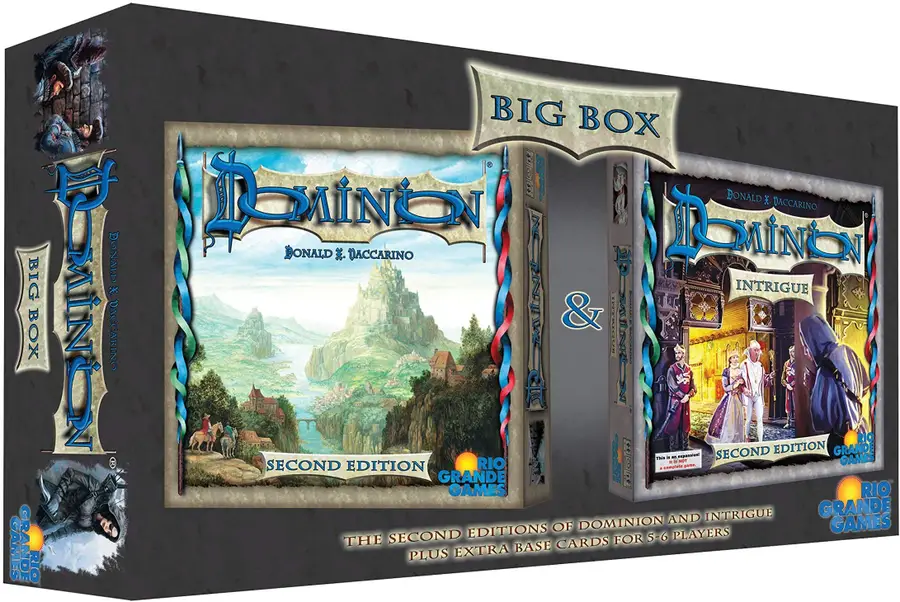
One of my favorites, Dominion is a great deck-building game where players take on the task of vying for dominion of a kingdom. It’s a seminal game for the deck-building genre and is darn near addicting in its levels of fun. During the COVID-19 pandemic, my friends and I played this game weekly online, and I credit it with helping to keep all of us sane.
What play looks like
Players take turns playing action cards, buying cards from the main spread in the center of the table, cleaning up by putting everything into their personal discard pile, and then drawing new cards from their personal deck. What’s so fun about this mechanic is that even with the same cards in play to choose from, vastly different strategies can emerge depending on which cards a player decides to actually buy and put into their own deck.
There are a bunch of expansions for Dominion, and a great online version that I recommend everyone check out to get a feel for how the game functions. The only downside I’ve ever found to Dominion is its limit to four players, which is difficult for anything but small dinners with friends, but in terms of which game is my favorite of all time, this one comes pretty darn near to the top of the list.


